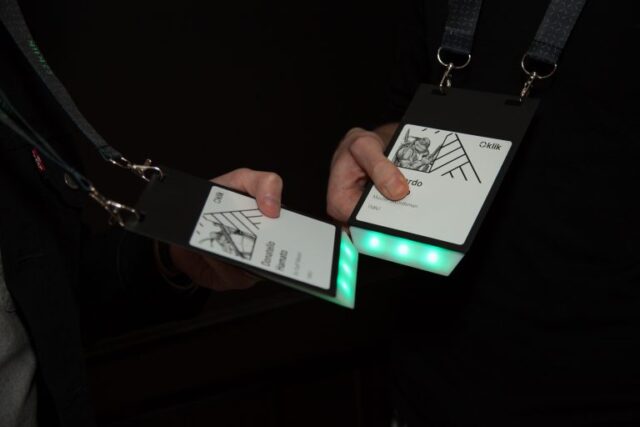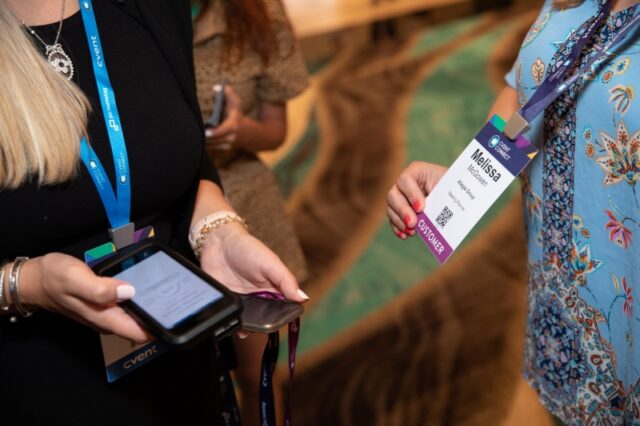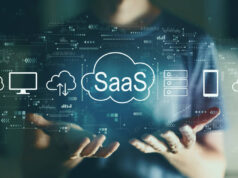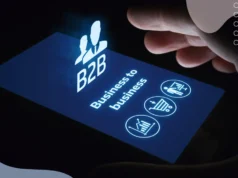
Conferences and trade shows are crucial events that bring together different industries, companies, and individuals to showcase their products, services, and knowledge. They provide an opportunity to network, establish partnerships, and learn from each other. However, with hundreds or even thousands of attendees, it can be challenging to keep track of everyone’s name, affiliation, and role. This is where name badges come in handy. Here are 7 reasons why name badges are a must-have for conferences and trade shows.
1. Easy identification
Name badges make it easy for attendees to identify each other and address them by name. It eliminates the need for awkward introductions and helps build a sense of familiarity and camaraderie. It also helps exhibitors and sponsors to identify potential clients or partners quickly.

2. Professional appearance
Professional appearance is essential in many areas of life, including business, education, and personal relationships. It refers to the way we present ourselves to others, including our clothing, grooming, and demeanor. A professional appearance can create a positive first impression, enhance credibility, and convey competence and confidence. Here are some subheadings that discuss professional appearance in more detail.
• Why Professional Appearance Matters
Professional appearance matters because it affects how others perceive us and can impact our success in various areas of life. In business, a professional appearance can help create a positive first impression, convey competence, and enhance credibility. It can also affect career advancement opportunities, as individuals who present themselves professionally are more likely to be viewed as capable and trustworthy. In personal relationships, a professional appearance can convey respect, self-care, and confidence.
• Elements of Professional Appearance
Several elements contribute to a professional appearance, including clothing, grooming, and demeanor. Clothing should be appropriate for the occasion and convey a sense of professionalism and confidence. Grooming includes hygiene, hairstyle, and makeup, which should be neat, clean, and well-maintained. Demeanor includes body language, communication skills, and attitude, which should be respectful, confident, and positive.
• Benefits of Professional Appearance
The benefits of a professional appearance are numerous and can impact various areas of life. In business, a professional appearance can improve career advancement opportunities, enhance credibility, and increase trustworthiness. It can also improve relationships with clients, colleagues, and superiors. In personal relationships, a professional appearance can convey respect, confidence, and self-care, which can improve self-esteem and enhance interpersonal connections.
• Implementing Professional Appearance
Implementing a professional appearance requires a conscious effort to present oneself in a polished and confident manner. This includes selecting appropriate clothing, maintaining good hygiene and grooming habits, and displaying a positive and confident demeanor. It may also involve seeking feedback and guidance from mentors, colleagues, or professionals.

3. Security
Name badges are an essential security measure for conferences and trade shows. They help organizers and security personnel identify who is authorized to attend the event and who is not. They also make it easier to keep track of attendees and ensure that no one enters restricted areas without permission.
4. Networking
Name badges facilitate networking by making it easier for attendees to connect with each other. They can quickly identify people with similar interests, job titles, or industries, and strike up a conversation. It also helps to break the ice and start a conversation, which can lead to meaningful connections.

5. Data Collection
Name badges can also serve as a tool for data collection. Organizers can include barcodes or QR codes on the badges to collect data such as attendees’ contact information, session attendance, or exhibitor interactions. This information can be used to improve future events and tailor marketing efforts.
6. Accessibility
Accessibility is a crucial aspect of creating inclusive environments for all individuals, including those with disabilities. It refers to the ability of people with disabilities to access and use facilities, services, products, and information on an equal basis with others. Providing accessibility can improve the quality of life for individuals with disabilities and help create a more diverse and equitable society. Here are some subheadings that discuss accessibility in more detail.

• Why Accessibility Matters
Accessibility matters because it ensures that everyone, regardless of their abilities, has equal access to opportunities and resources. It helps to remove barriers and create an environment where everyone can participate, contribute, and thrive. Without accessibility, individuals with disabilities may face discrimination, social exclusion, and reduced opportunities for education, employment, and social interaction.
• Types of Accessibility
There are several types of accessibility, including physical accessibility, sensory accessibility, cognitive accessibility, and technological accessibility. Physical accessibility refers to the design of spaces and structures that accommodate individuals with physical disabilities, such as wheelchair ramps, wider doors, and accessible restrooms. Sensory accessibility refers to the design of products and services that consider the needs of individuals with sensory disabilities, such as hearing aids, visual aids, and alternative formats for information.
Cognitive accessibility refers to the design of information and communication that considers the needs of individuals with cognitive disabilities, such as clear and simple language, easy-to-read fonts, and visual aids. Technological accessibility refers to the design of technology that accommodates individuals with disabilities, such as screen readers, voice recognition software, and captioning.
• Implementing Accessibility
Implementing accessibility requires a comprehensive approach that considers all aspects of the environment, products, and services. It starts with understanding the needs of individuals with disabilities and designing solutions that meet those needs. This includes consulting with disability advocacy groups, conducting accessibility audits, and using accessible design standards. It also involves training staff and volunteers on disability awareness and ensuring that accessibility is integrated into all aspects of the organization.
• Benefits of Accessibility
The benefits of accessibility are numerous and far-reaching. Accessibility can help to create more inclusive and diverse communities, increase social integration, and reduce discrimination. It can also help to improve the quality of life for individuals with disabilities and enhance their opportunities for education, employment, and social interaction. Accessibility can also benefit businesses by expanding their customer base, improving their reputation, and complying with legal and ethical obligations.

7. Souvenir
Name badges can also serve as a souvenir for attendees. They can be designed to include event-specific information, such as the event date, location, or theme. Attendees can keep them as a reminder of their experience at the conference or trade show.
Conclusion
In conclusion, name badges are a must-have for conferences and trade shows. They provide easy identification, a professional appearance, security, networking opportunities, data collection, and accessibility, and serve as a souvenir. By including name badges in your event planning, you can ensure a successful and memorable experience for all attendees.









